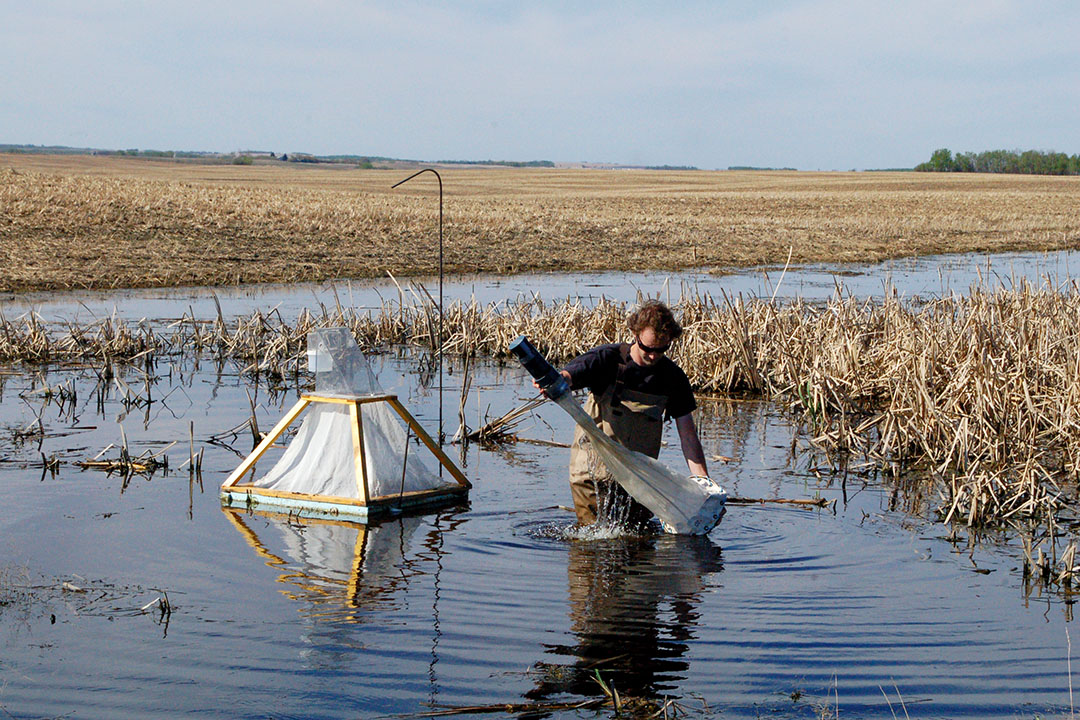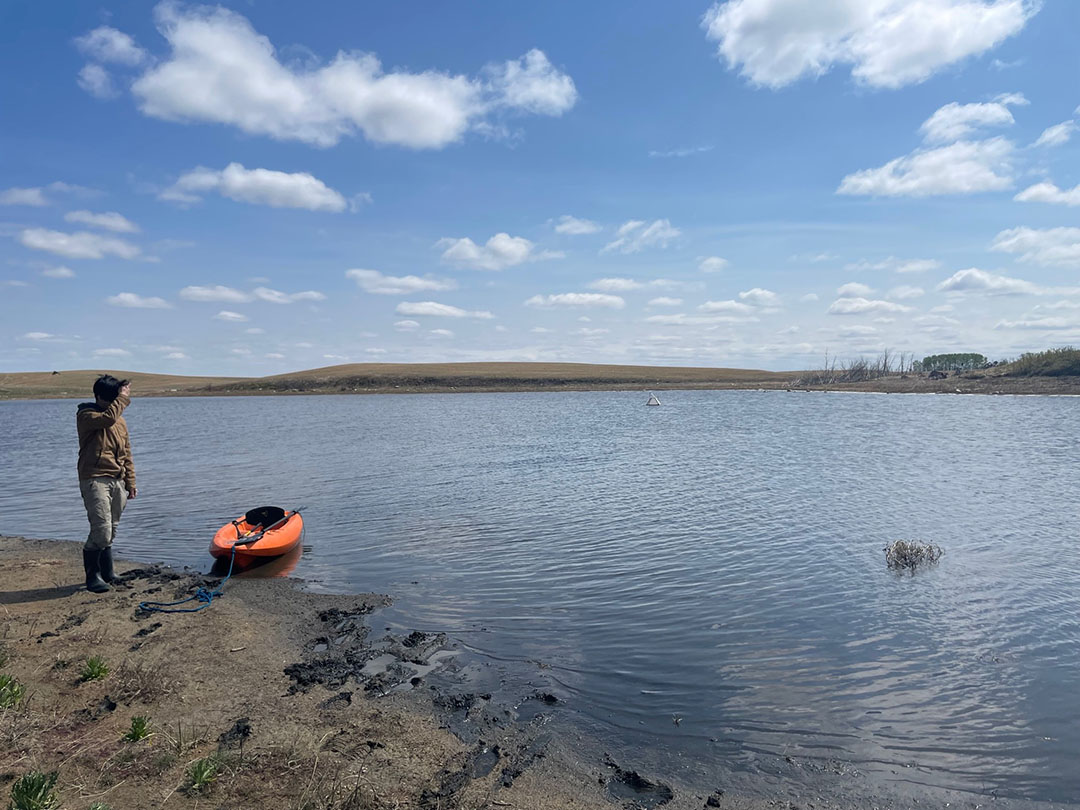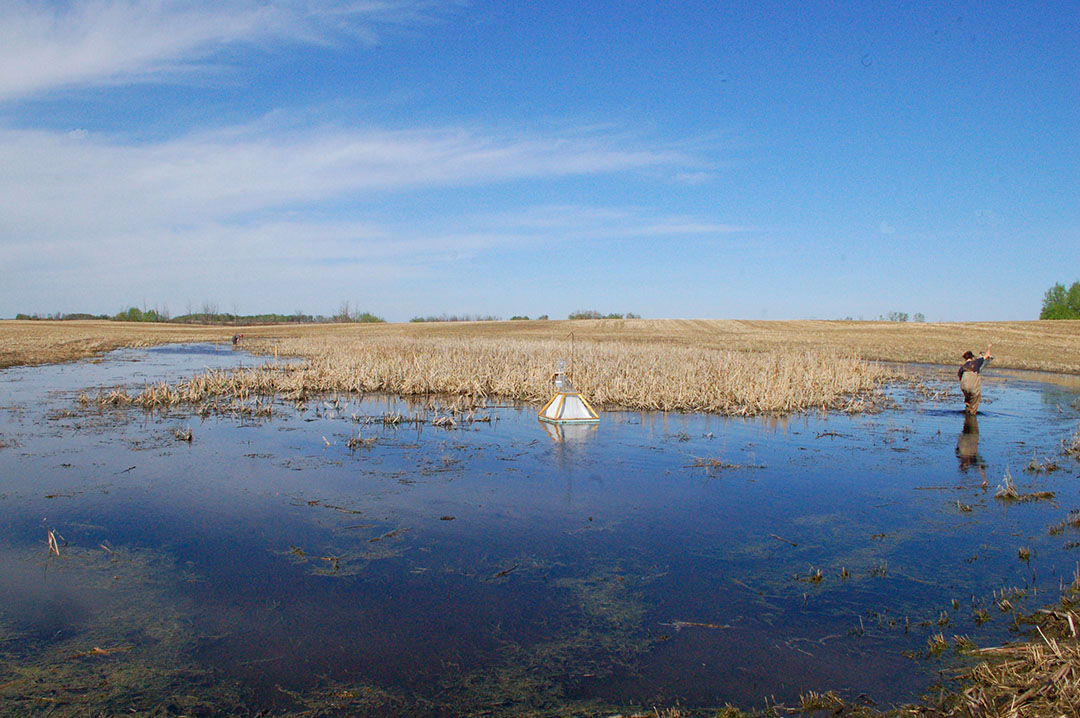
USask research team receives $250,000 for groundbreaking investigation into Saskatchewan wetlands
An interdisciplinary team of University of Saskatchewan (USask) researchers received a quarter of a million dollars from the New Frontiers in Research Fund (NFRF) Exploration stream to do a comprehensive investigation of aquatic insect exports from the wetlands in the Prairie Pothole region.
By Matt OlsonDr. Tim Jardine (PhD) with the School of Environment and Sustainability (SENS), Dr. Christy Morrissey (PhD) with the Department of Biology in the College of Arts and Science, and Dr. Patrick Lloyd-Smith (PhD) with the Department of Agricultural and Resource Economics are leading the project that received the illustrious NFRF grant.
The team is hoping to comprehensively track the biological exports – such as nutrients and pesticides from insects that are consumed by other animals – of these Saskatchewan wetlands.
They will also create a valuation system to quantifiably demonstrate how these exports from wetlands contribute to the overall ecosystem and how those contributions translate to the benefit of wildlife and humans.
“We have this vast number of wetlands that surround us in this Prairie landscape. They’re very cool study systems, but they’re very vulnerable to human impacts,” Jardine said.

The research team will use wetland insect traps and experimental enclosures called limnocorrals with chemical tests to measure the number and quality of insects exported from the wetland areas and what kind of effect they have on surrounding ecosystems. The team hopes to emphasize the real-world relevance of maintaining these wetlands by conducting their research in the field.
Part of the research will also involve a random sample survey sent to Canadians to gauge how valuable protecting these wetlands are in the eyes of everyday people. Wetland regions are often considered undesirable, either as impediments to urban or agricultural development or as simple nuisances.
“These water bodies are often identified as sloughs, which is kind of a derogatory term. They’re considered wasteland, non-productive areas. But that is counter to everything ecologists know about them – that they’re actually highly productive, highly beneficial sites that can move important insect prey from aquatic to terrestrial environments,” Morrissey said.
As Morrissey puts it, it’s important for the public to understand the importance of maintaining the wetlands to the ecosystem.
“It’s the goodwill of an individual farmer to keep them,” she said. “We need to have a better understanding of the value of the variety of services the wetlands provide.”
The NFRF Exploration fund provides support for projects considered to be creative, “high-risk/high-reward” research. The USask team’s project is considered high-risk research because of the inherent difficulties of directly evaluating the consequences of human impact on wetlands and vice versa.
The scope of the research covers multiple areas of biology, toxicology, chemistry, and economics. Jardine said having “true collaboration” where different experts in their respective fields are all operating on an equal level, makes cutting-edge projects like this possible.
“All three of us have a part to play, we all understand our role and we can all work together towards this common problem at an appropriate scale,” he said.
Both Morrissey and Jardine noted that these NFRF grants are difficult to secure, and that the funding makes a significant difference for getting high-risk, creative projects off the ground.
“It’s exciting. They do fund groundbreaking projects,” Jardine said. “It’s a chance for us to try out something a little bit different that we aren’t typically able to do.”

Together, we will undertake the research the world needs. We invite you to join by supporting critical research at USask.

